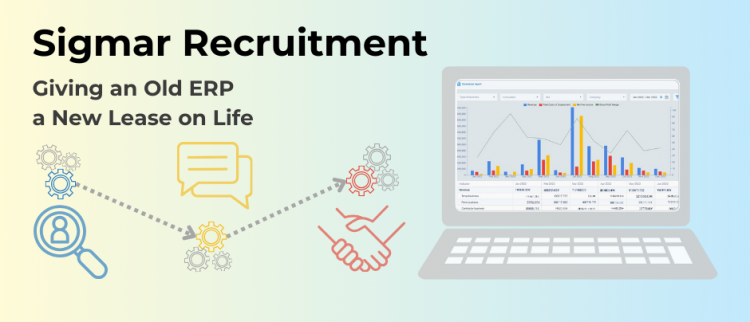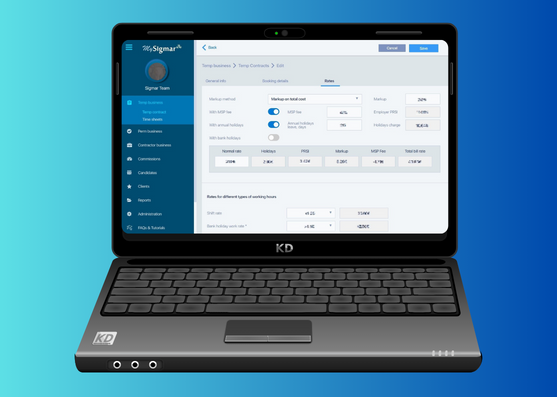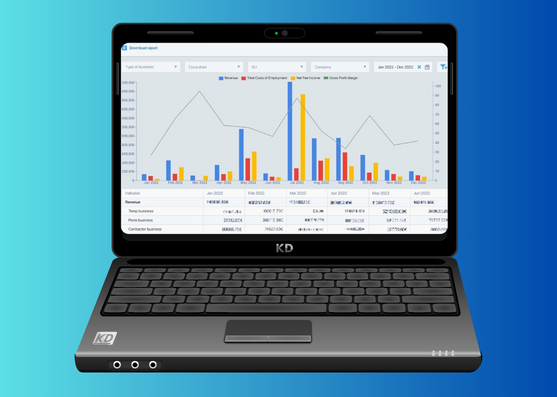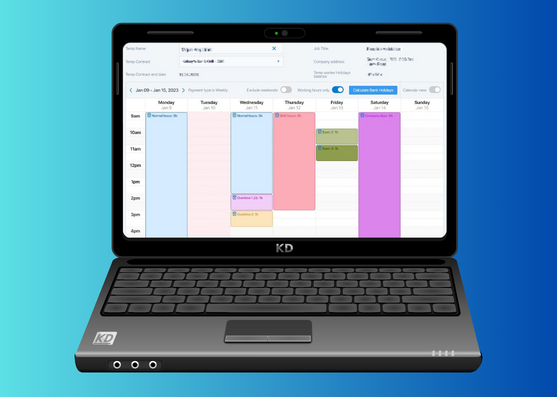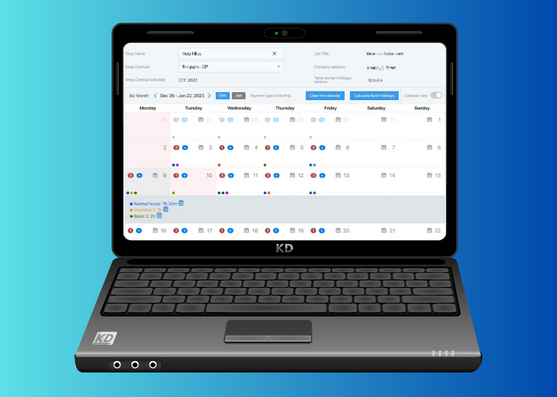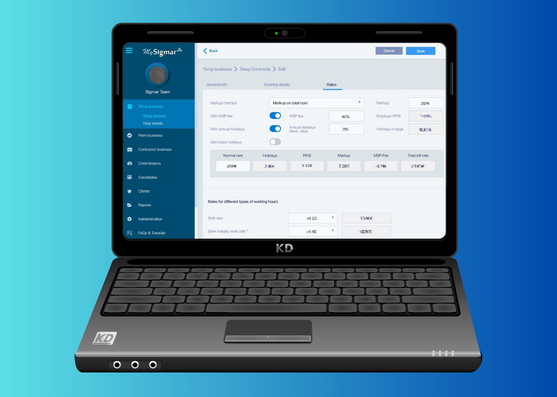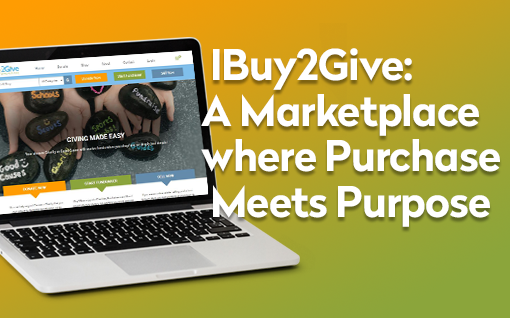Sigmar Recruitment: Custom ERP on a Moderate Budget
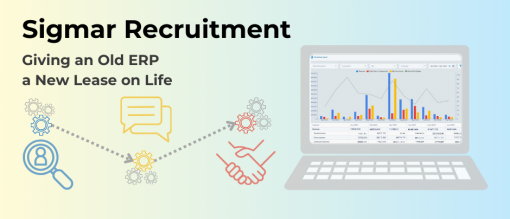
- Reporting & Invoicing
- Contractor Management
- Automation
- Security
Business Context
While trillions are spent yearly on paper-based document management worldwide, companies still struggle to abandon their manual processes and go paperless due to forbidding costs and high complexity of ERP customization projects.
What is Sigmar Recruitment
Sigmar Recruitment consolidates the online job-search-and-offering effort in Ireland. They decided to also consolidate the company’s ERP system modules towards better transparency and efficiency.
Client
Sigmar Recruitment is Ireland’s largest recruitment consultancy, managing various classes of job candidates and employees, both permanent and temporary, across multiple industries. It provides a legal environment for all the sides involved. Its labour-heavy accounting and contract management processes required additional optimization for the modern-day conditions.
Problem: An Old ERP in Need of Consolidation for Transparency and Efficiency
The company used SAP and another payroll system for payment management and invoicing. However, some data management was done manually, since the existing ERP systems did not support the necessary functions. The system was in need of new functionality, specifically related to reporting and commissions.
Solution: Custom ERP on a Moderate Budget
CT worked out a lean path to the recruitment process automation and synchronizing the payroll system with SAP on a moderate budget.
Key Challenges
Old ERP systems are notoriously hard to modernize, especially when the knowledge base is scarce and spread across the time and space.
- Boosting an old system capability. The current system comprised various software. Part of it needed replacement, the other part – integration.
- Insufficient or outdated documentation. The documentation could not keep up with the years of the system development. To fill in the gaps, we communicated with the subject-matter experts to gather the domain knowledge for the API.
- Data maintenance. The system had to become robust enough to maintain bigger volumes of data.
- Strategic resource management on a limited budget. Agile methodology and iterative approach helped control the resources and deliver incremental business value.
How we did it
Step 1: Requirements gathering and specification for the initial estimate
Our partner shared the initial requirements. Next, we had to fill in the gaps for whatever documentation was missing to provide the customer with a ballpark estimate of the effort.
Step 2: BA sessions, design, architectural solution, and interactive prototyping
The old system required integrations. As the documentation was sparse or old, we reversed-engineered the solution and built an interactive prototype to validate all the assumptions.
Step 3: Basic requirements implementation and testing
We developed an API to connect the ERP modules and replicated the manual recruitment process digitally to follow the current business rules for various types of contracts. We implemented the basic solution to tight deadlines with a minimal team and passed it on to the test group for feedback.
Step 4: Staging, real-time testing, focus group learning
After we made sure everything worked correctly, the system was put on staging and tested in real-time mode. A group of employees was trained to work with it.
Step 5: Going live in production, system stabilization, onsite employee training
Next, we deployed the system to the product environment and further trained the employees to use the software company-wide.
The company takes a gradual adoption approach within the company. Meanwhile, we are working on continual improvement. Once the users get familiar with the system and enjoy its benefits, we can move on to implementing other ideas.
Key Features
Integrations
Integrations are important. They eliminate manual processes and allow for error-free data transfer. While this alone boosts efficiency, it also removes the unknowns and allows the company to see the big picture. Managers gain clarity via reports; consultants benefit from seeing the payment breakdown in their personalized wallets; admins can oversee the efficiency of various business units. Moving the data to the cloud also ensures greater mobility within secure boundaries.
Gross margin generation
The system implementation has granted the company management access to real-time reports. These can be generated at a touch of a button, viewed, downloaded, or mailed immediately. Among others, the gross margin report has a clear visualization and clear textual data totals of the current year’s profits.
Contract management
The contract management got automated end-to-end. We replaced the time-consuming manual data gathering and manipulation with digital forms and one-click updates. That saved hours of work, spared human errors, and added clarity for different employee types.
Complete payroll calculation
The old system took good care of payment calculations but left granularity out. Consolidating the old and the new provided the best of both worlds, adding visibility to managers and consultants.
Security
Keeping the system in the cloud was both an advantage and a challenge. On the bright side, getting access from anywhere anytime was a huge win. On the other hand, it created security challenges. This is where we shined in creating the right architectural solutions and communicating them to distributed service providers.

